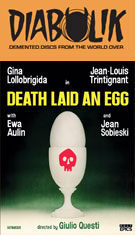
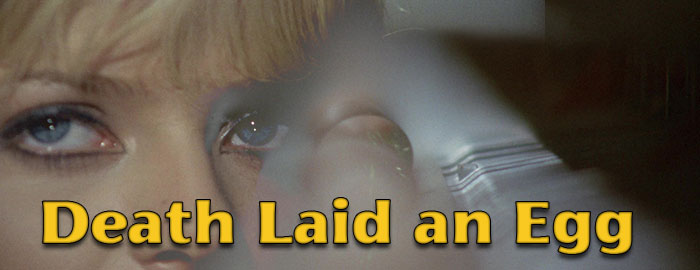
Color, 1968, 104 mins. 26 secs. / 90 mins. 45 secs.
Directed by Giulio Questi
Starring Gina Lollobrigida, Jean-Louis Trintignant, Ewa Aulin, Jean Sobieski, Renato Romano
Cult Epics (Blu-ray & DVD) (US RA0 HD/NTSC), Nucleus Films (Blu-ray) (UK RB HD) / WS (1.85:1) (16:9), ELEA-Media (Blu-ray) (Germany R0 HD) / WS (1.78:1) (16:9), King Records (DVD) (Japan R1 NTSC) / WS (1.85:1)
A 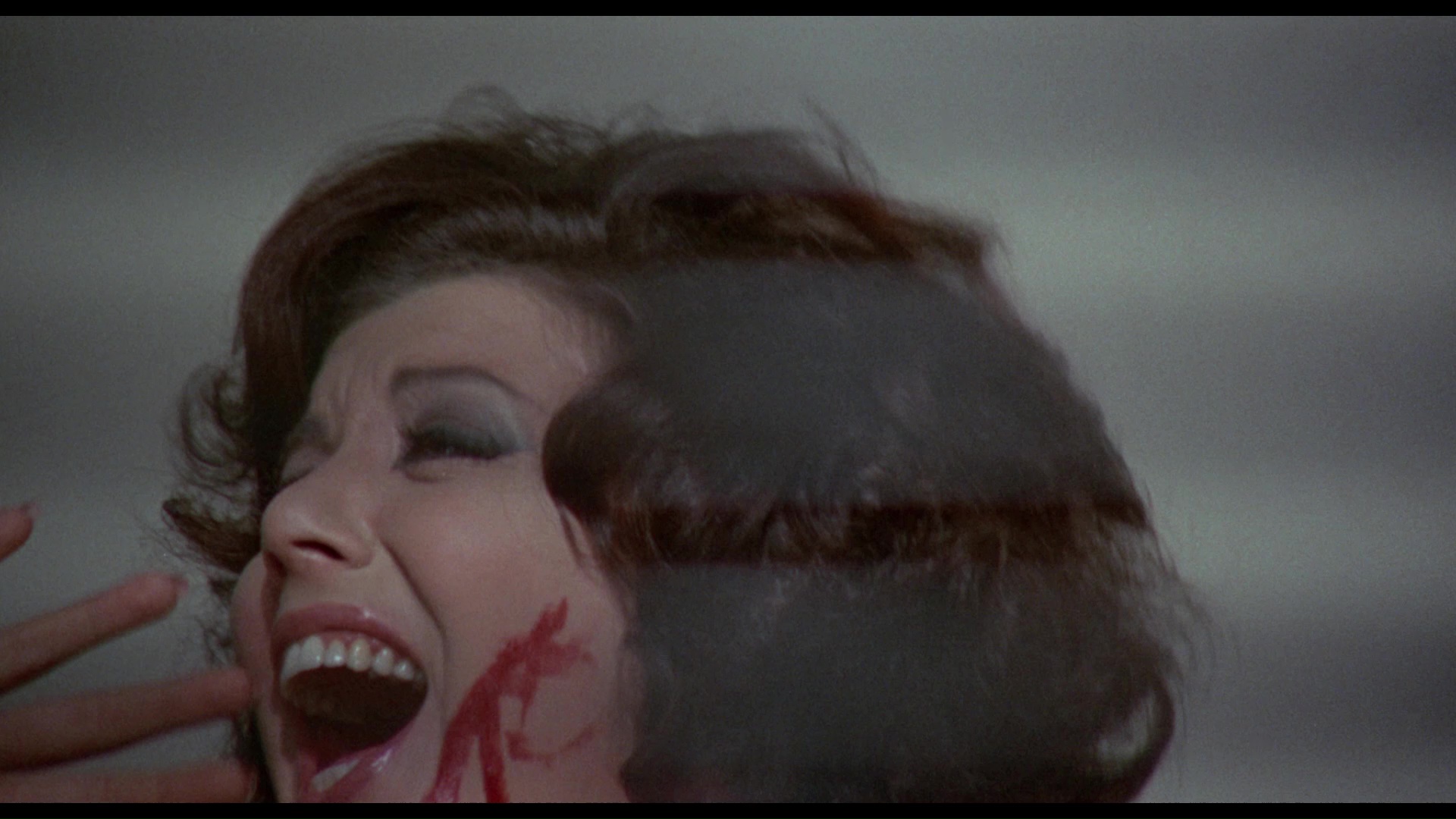 strong contender for the weirdest
strong contender for the weirdest 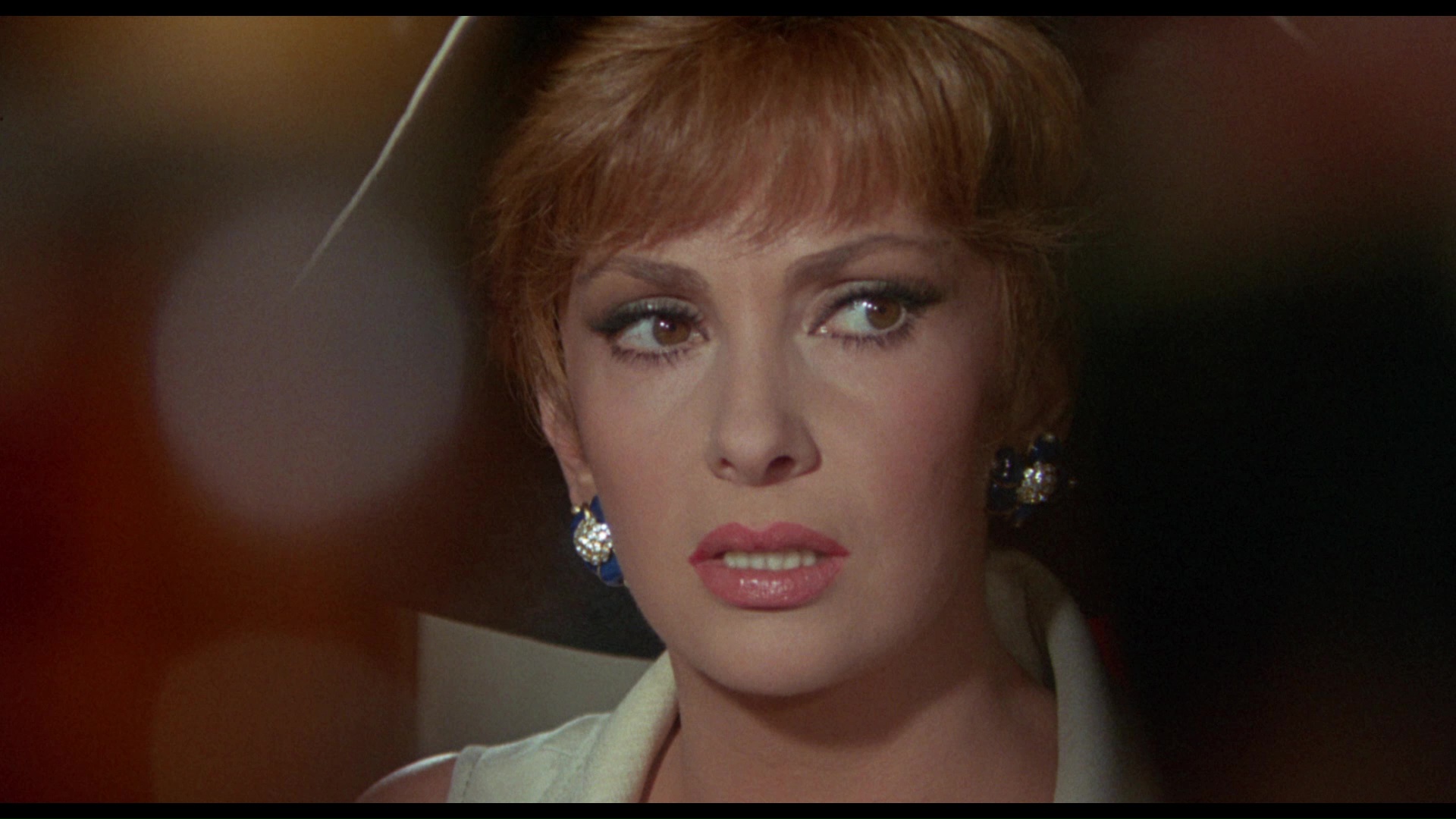 giallo out there, Death Laid an Egg barely even qualifies as one at all for much of its running time. That’s not a bad thing at all as plenty of room is made for black comedy, implied fetishism, and outright grotesqueries to spring from the brain of avant-garde Italian filmmaker Giulio Questi, who directed this in between Django Kill… If You Live, Shoot! and Arcana with a script co-written by regular collaborator Franco Arcalli. Somehow, Questi also managed to lure in two unlikely, major stars for the project, Gina Lollobrigida and French New Wave star Jean-Louis Trintignant, as well as Swedish-born it girl at the time Ewa Aulin (Candy). Also boasting a truly out-there, unforgettable score by Bruno Madera, it's one of the most eccentric offerings from European cinema during the late '60s. And that's really saying something.
giallo out there, Death Laid an Egg barely even qualifies as one at all for much of its running time. That’s not a bad thing at all as plenty of room is made for black comedy, implied fetishism, and outright grotesqueries to spring from the brain of avant-garde Italian filmmaker Giulio Questi, who directed this in between Django Kill… If You Live, Shoot! and Arcana with a script co-written by regular collaborator Franco Arcalli. Somehow, Questi also managed to lure in two unlikely, major stars for the project, Gina Lollobrigida and French New Wave star Jean-Louis Trintignant, as well as Swedish-born it girl at the time Ewa Aulin (Candy). Also boasting a truly out-there, unforgettable score by Bruno Madera, it's one of the most eccentric offerings from European cinema during the late '60s. And that's really saying something.
In the fragmented opening we see snapshots of modern urban life including the savage knife murder of a prostitute, committed (or so it would seem) by executive Marco (Trintignant). Outside the city, Marco runs a sprawling, cutting-edge chicken farm with his wife, Anna (Lollobrigida), while pretty young Gabrielle (Aulin) tends to their secretarial needs. Their moneyed existence produces all forms of monstrosities including a plan to bump off Anna between the adulterous Marco and Gabrielle, professional paranoia thanks to the suspicious activity of the plant’s advertising head (Sobieski, father of Leelee), debauched dinner parties, and an automated factory nightmare 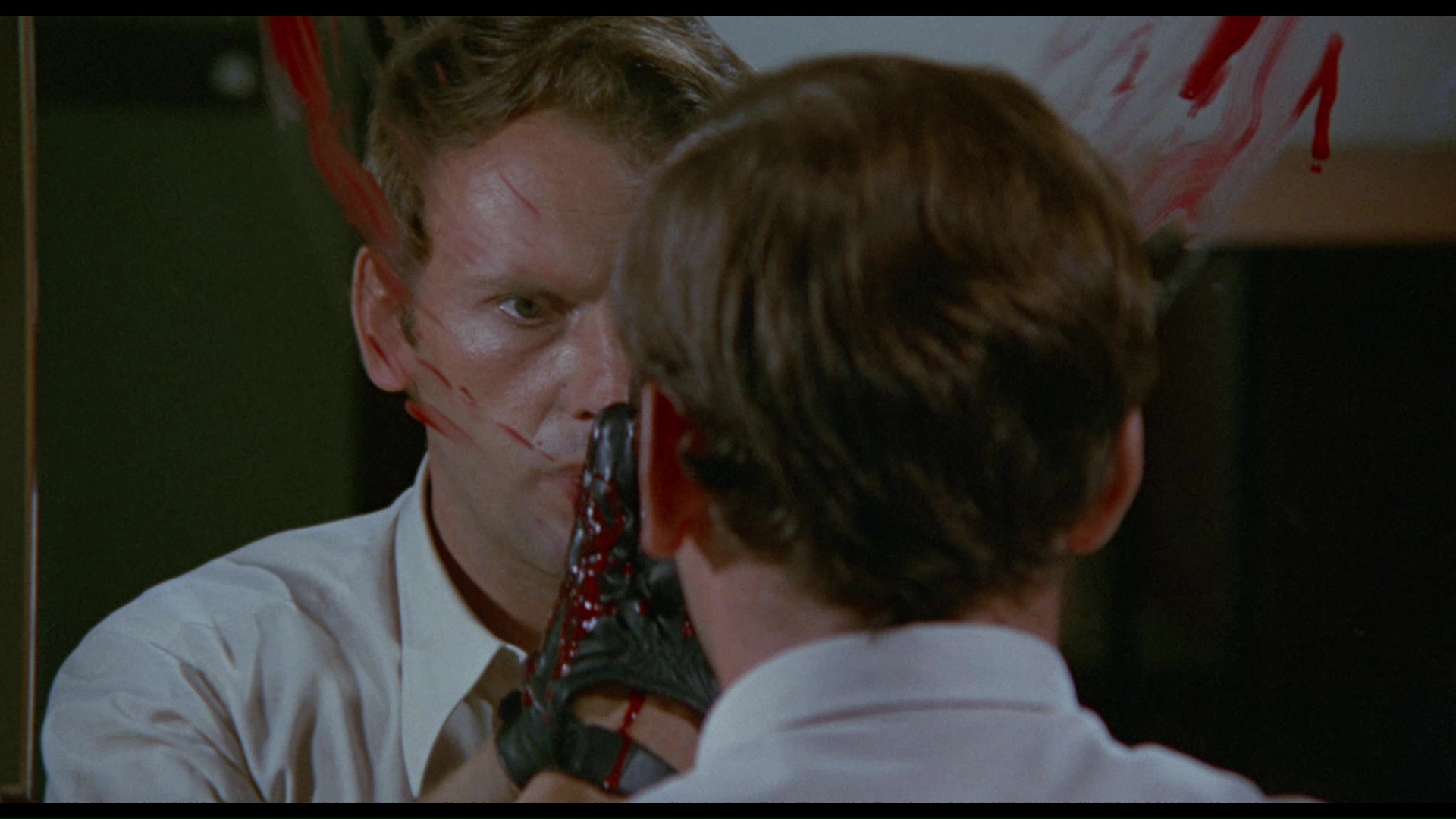 that results in pulsating, David Lynchian chickens without heads or wings. Soon all the deceptions and murderous plotting come to a head, though not quite in the way
that results in pulsating, David Lynchian chickens without heads or wings. Soon all the deceptions and murderous plotting come to a head, though not quite in the way 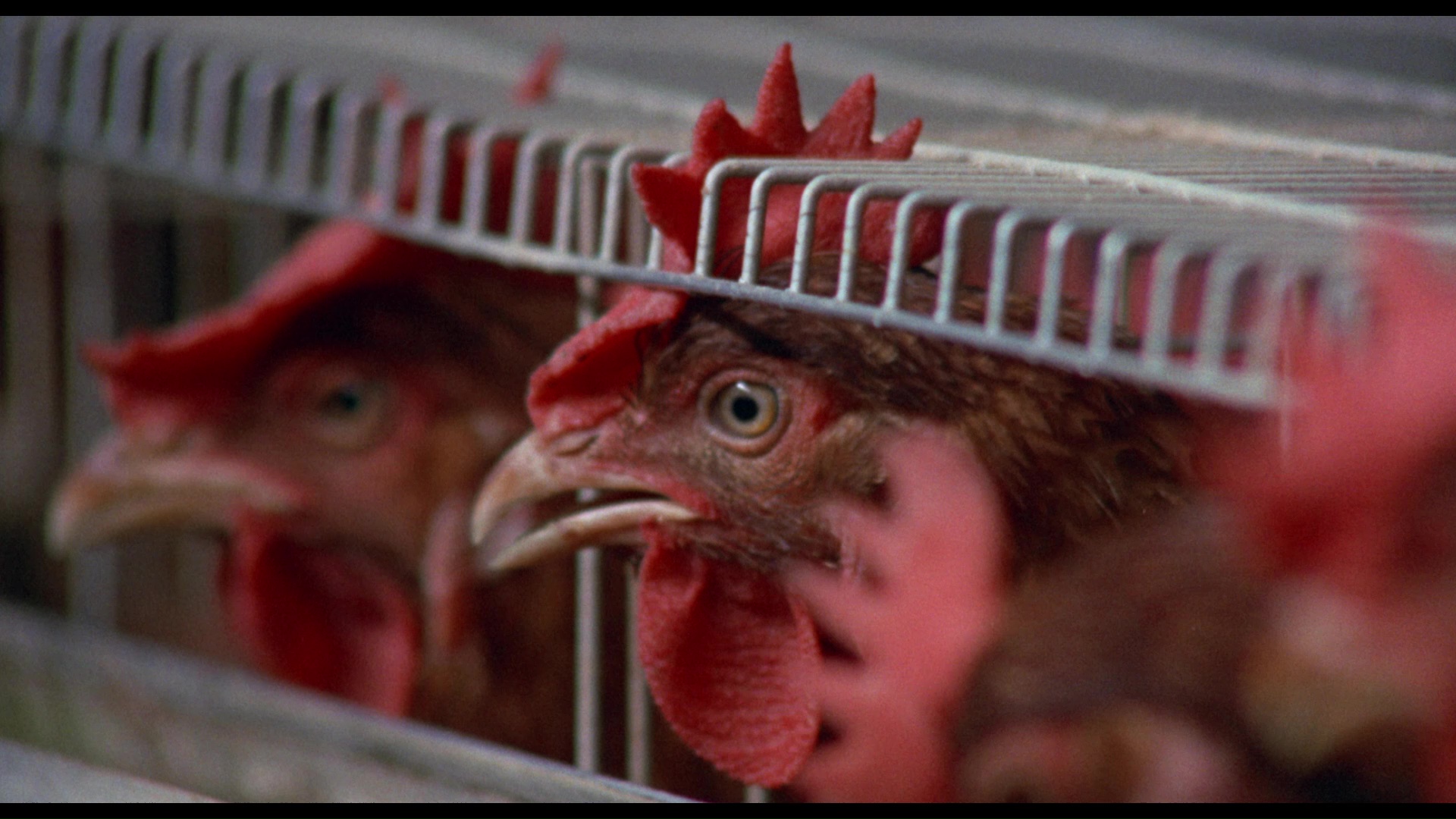 you'd expect.
you'd expect.
Fascinating from its opening shots of microscopic chicken ovum in various stages of development, Death Laid an Egg is part of the freewheeling giallo experimentation that flourished with challenging films like Tinto Brass’s Deadly Sweet and Mario Bava’s borderline abstract Five Dolls for an August Moon before the big ‘70s renaissance. Though it feels intent on subverting as many staples of the thriller genre as possible, it's interesting to see how this film's DNA did manage to seep into some of the later gialli, most notably Autopsy (whose opening sequence owes a heavy debt to this film) and the disorienting Spasmo. Not surprisingly, the film posed a marketing challenge around the globe where it also screened under such titles as Plucked and (in the U.K.) A Curious Way to Love, which is putting it mildly. The idea of doing what amounts to a meta dissection of a thriller trend that had only been in vogue for about five years was way over audience’s heads at the time (and might still be), with the final twenty minutes in particular offering an audacious refusal to conform to audience’s expectations.
Following an enthusiastic write-up by European Trash Cinema’s Craig Ledbetter who tracked down a Mexican VHS copy during a jaunt in Florida, Death Laid an Egg became something of a 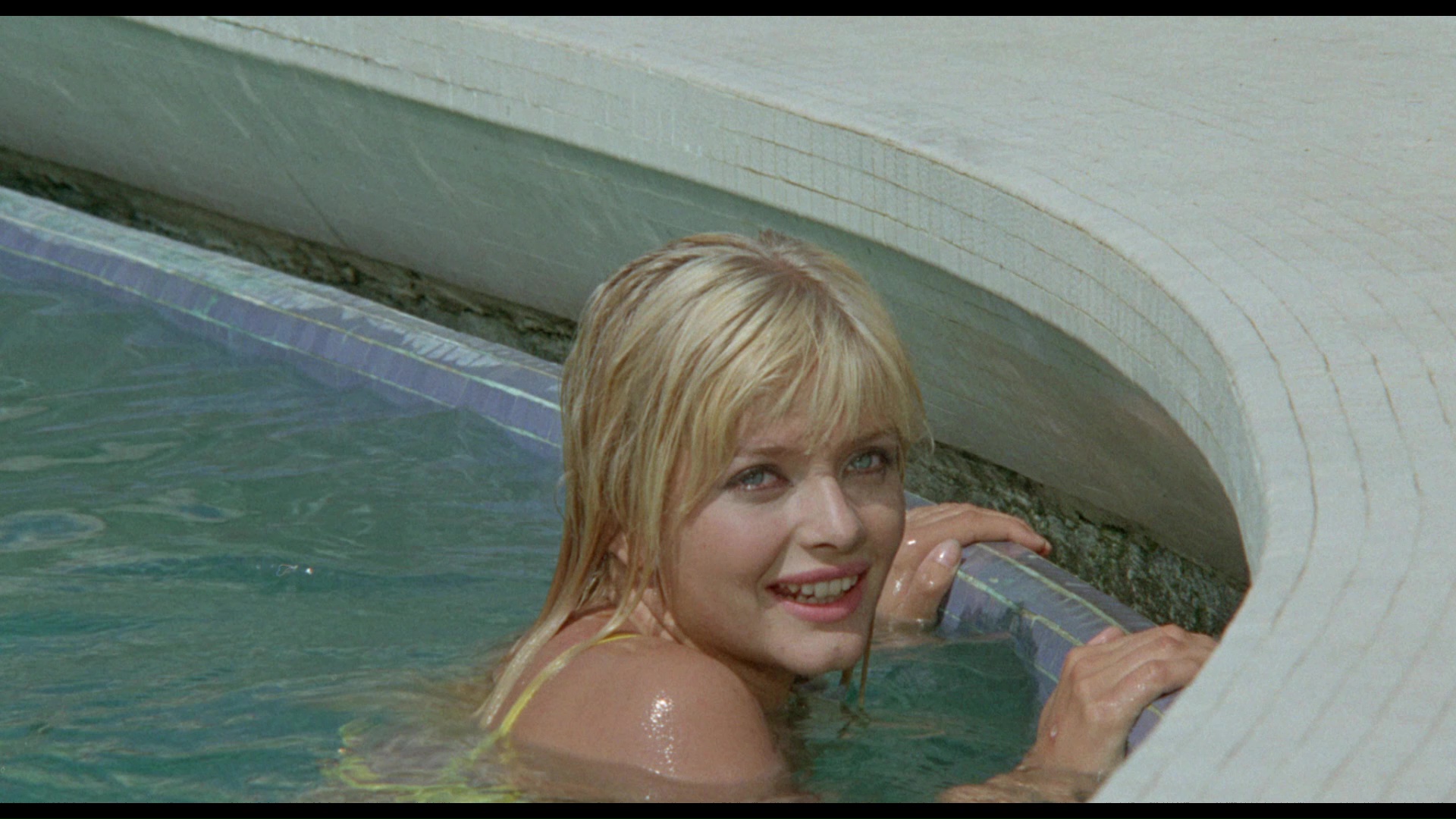 hot item on the fan-trading circuit before it finally hit DVD in 2003 in Japan. The non-anamorphic transfer (running 86m39s and looking like an uncorrected PAL-based transfer) was obviously better than the dupey VHS copies floating around and was in English with removable Japanese subtitles, even if the presentation itself wasn’t the hottest. Blue Underground planned to issue the title as part of its initial wave of giallo releases a couple of years later but the lack of suitable materials for a 16x9 transfer led to the project being scrapped. A new wrinkle in the film’s history appeared in 2015 when German label ELEA-Media released a “Giallo Double Feature” disc pairing the film up with the very rare Yellow: Le Cugine, both in German with optional English subtitles. Extras include trailers, galleries, and a liner notes booklet by Christian Kessler. What’s interesting is that the
hot item on the fan-trading circuit before it finally hit DVD in 2003 in Japan. The non-anamorphic transfer (running 86m39s and looking like an uncorrected PAL-based transfer) was obviously better than the dupey VHS copies floating around and was in English with removable Japanese subtitles, even if the presentation itself wasn’t the hottest. Blue Underground planned to issue the title as part of its initial wave of giallo releases a couple of years later but the lack of suitable materials for a 16x9 transfer led to the project being scrapped. A new wrinkle in the film’s history appeared in 2015 when German label ELEA-Media released a “Giallo Double Feature” disc pairing the film up with the very rare Yellow: Le Cugine, both in German with optional English subtitles. Extras include trailers, galleries, and a liner notes booklet by Christian Kessler. What’s interesting is that the 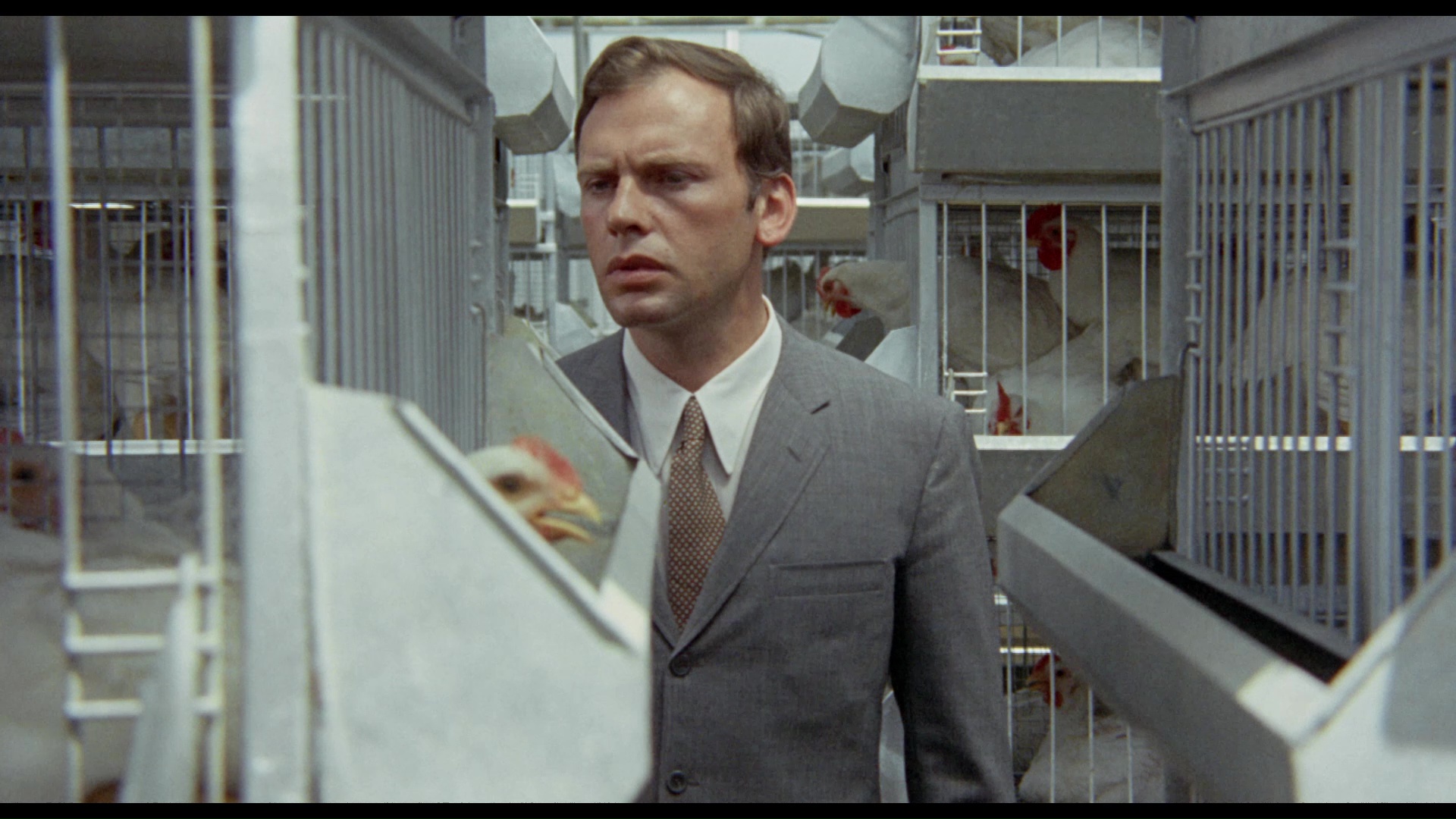 German version of Death Laid an Egg seen here is a very different edit of the film (88m38s), dropping a substantial amount of footage from the familiar Italian and English general release cuts while adding some startling footage unseen in other home video releases (most obviously some gruesome depictions of how chicken processing works, so eating while watching is not advised). The transfer itself is okay but again underwhelming, with a significant teal tint (the most obnoxious trend in recent transfers) that wipes out any pure whites in the film. In late 2017, Cult Epics brought the film to U.S. Blu-ray and DVD as a combo package initially promoted as part of its crowdfunding campaign revolving around the publication of a formidable coffee table book. That disc
German version of Death Laid an Egg seen here is a very different edit of the film (88m38s), dropping a substantial amount of footage from the familiar Italian and English general release cuts while adding some startling footage unseen in other home video releases (most obviously some gruesome depictions of how chicken processing works, so eating while watching is not advised). The transfer itself is okay but again underwhelming, with a significant teal tint (the most obnoxious trend in recent transfers) that wipes out any pure whites in the film. In late 2017, Cult Epics brought the film to U.S. Blu-ray and DVD as a combo package initially promoted as part of its crowdfunding campaign revolving around the publication of a formidable coffee table book. That disc 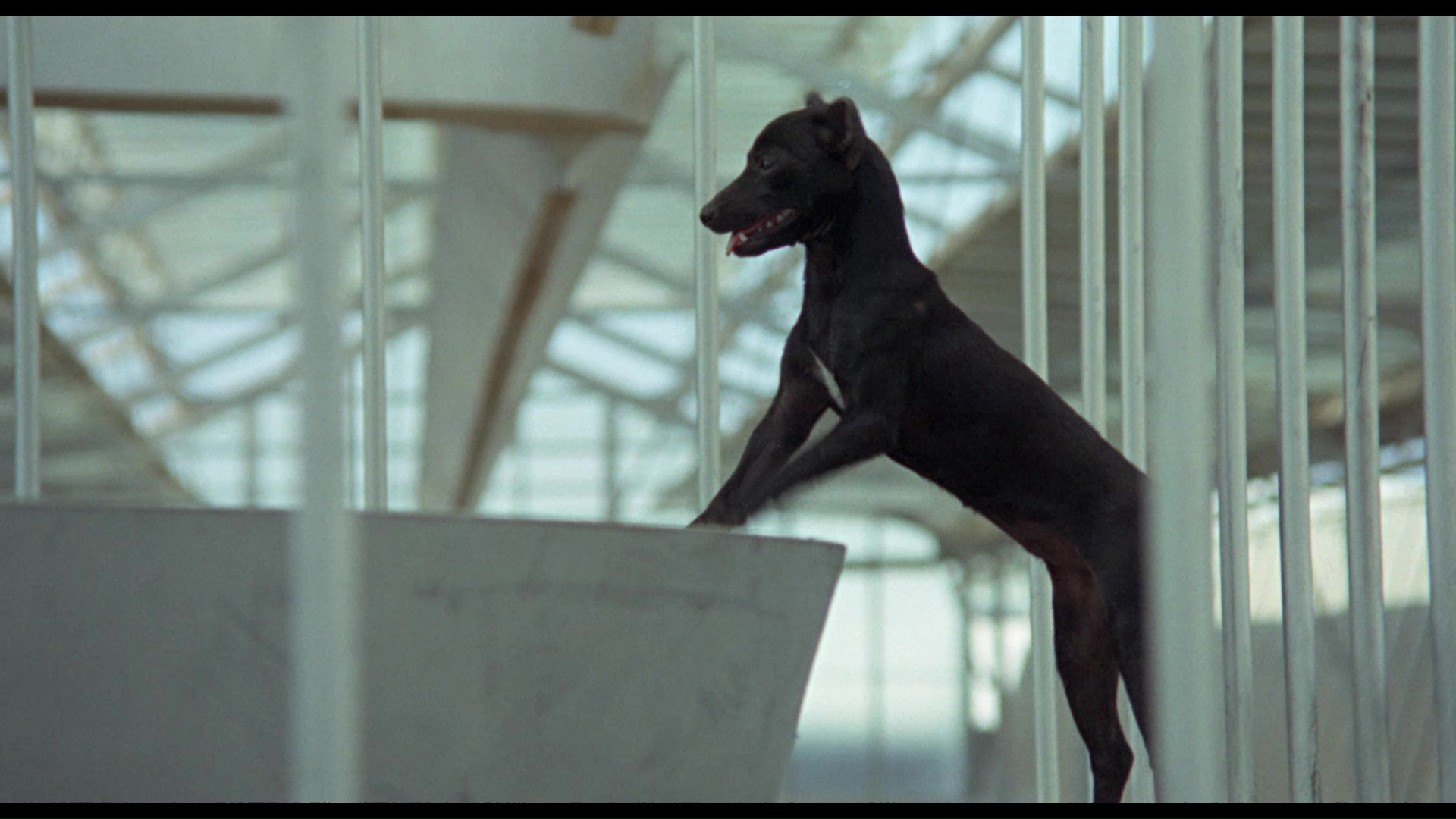 featured the standard English edition (known now as the “giallo version”) along with the trailer, a gallery of lobby cards, and an isolated score track to really confuse everyone within earshot. The transfer itself is reflective of the issues getting decent elements in the U.S., looking soft and wan throughout.
featured the standard English edition (known now as the “giallo version”) along with the trailer, a gallery of lobby cards, and an isolated score track to really confuse everyone within earshot. The transfer itself is reflective of the issues getting decent elements in the U.S., looking soft and wan throughout.
Easily the definitive release of the film to date (and likely for many years to come) is the 2018 edition from the U.K.’s Nucleus Films, which also has its basis in a crowdfunding effort for a full-scale restoration along with Lady Frankenstein. Here you have an option between the standard giallo cut and as assembly of Questi's original 104-minute director's cut, available for the first time ever and quite a revelation no matter how many times you've seen before. All the footage from past versions is here, but you also get an entire additional character(!) and lots of additional little grace notes that make the film's satirical and sociological commentary much more pronounced. (If you ever wanted to hear reams of dialogue about chicken embryo modification, here you go.) Both presentations use a really lovely new HD scan of the original negative as the base, with the longer cut also added footage from a 35mm print with surprisingly consistent and impressive results. Optional, correctly translated English subtitles are also included for both cuts, with English or Italian audio options (LPCM mono and dubbed either way). The Italian audio sounds more dynamic, but either one will do just fine; the English audio 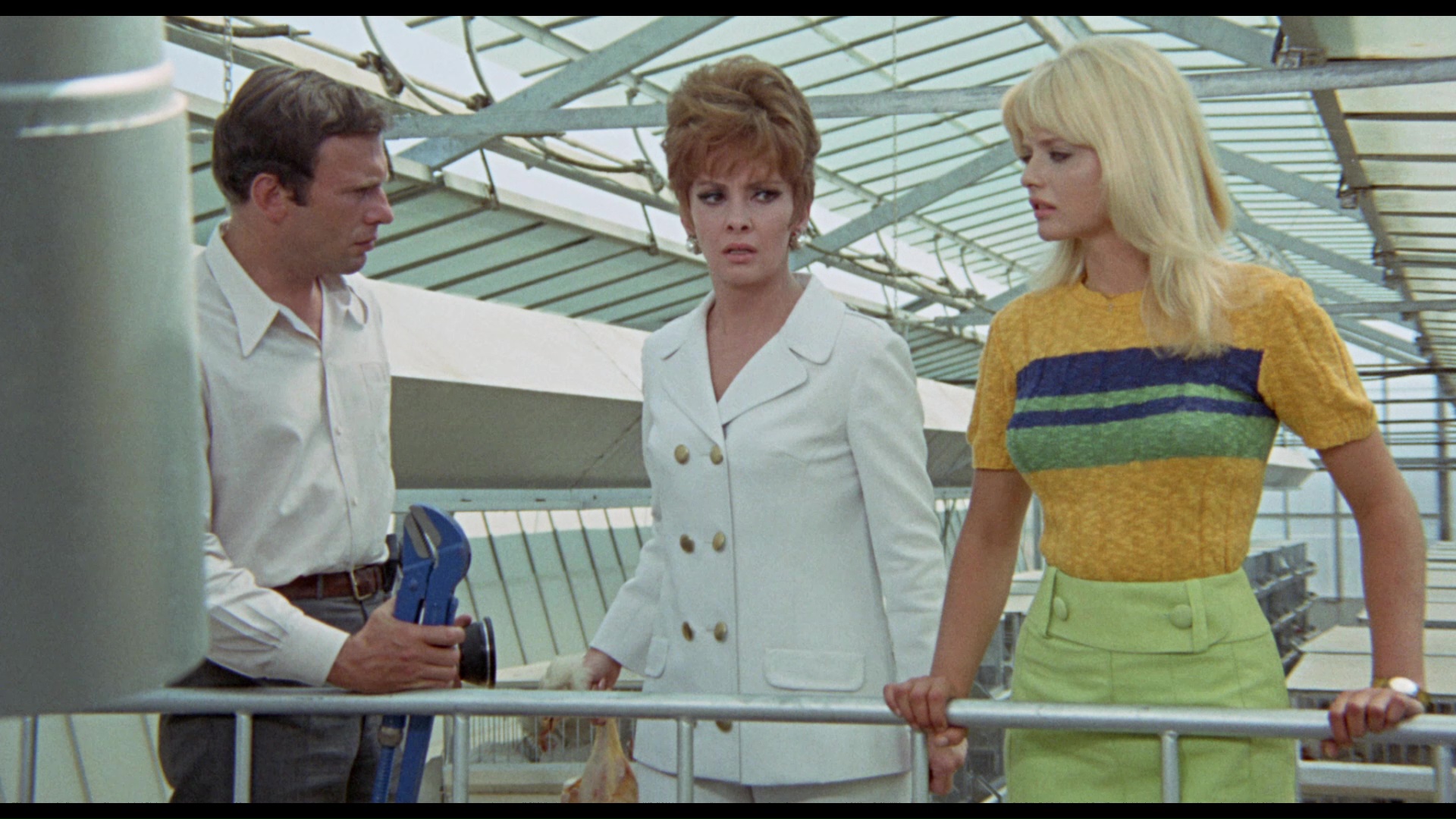 for the long version also has a few bits in Italian with subtitles, obviously, since there was never a full dub crafted for that one.
for the long version also has a few bits in Italian with subtitles, obviously, since there was never a full dub crafted for that one.
The full cut can also be played with a fun new audio commentary with the reliable team of Alan Jones and Kim Newman, who open by noting this is 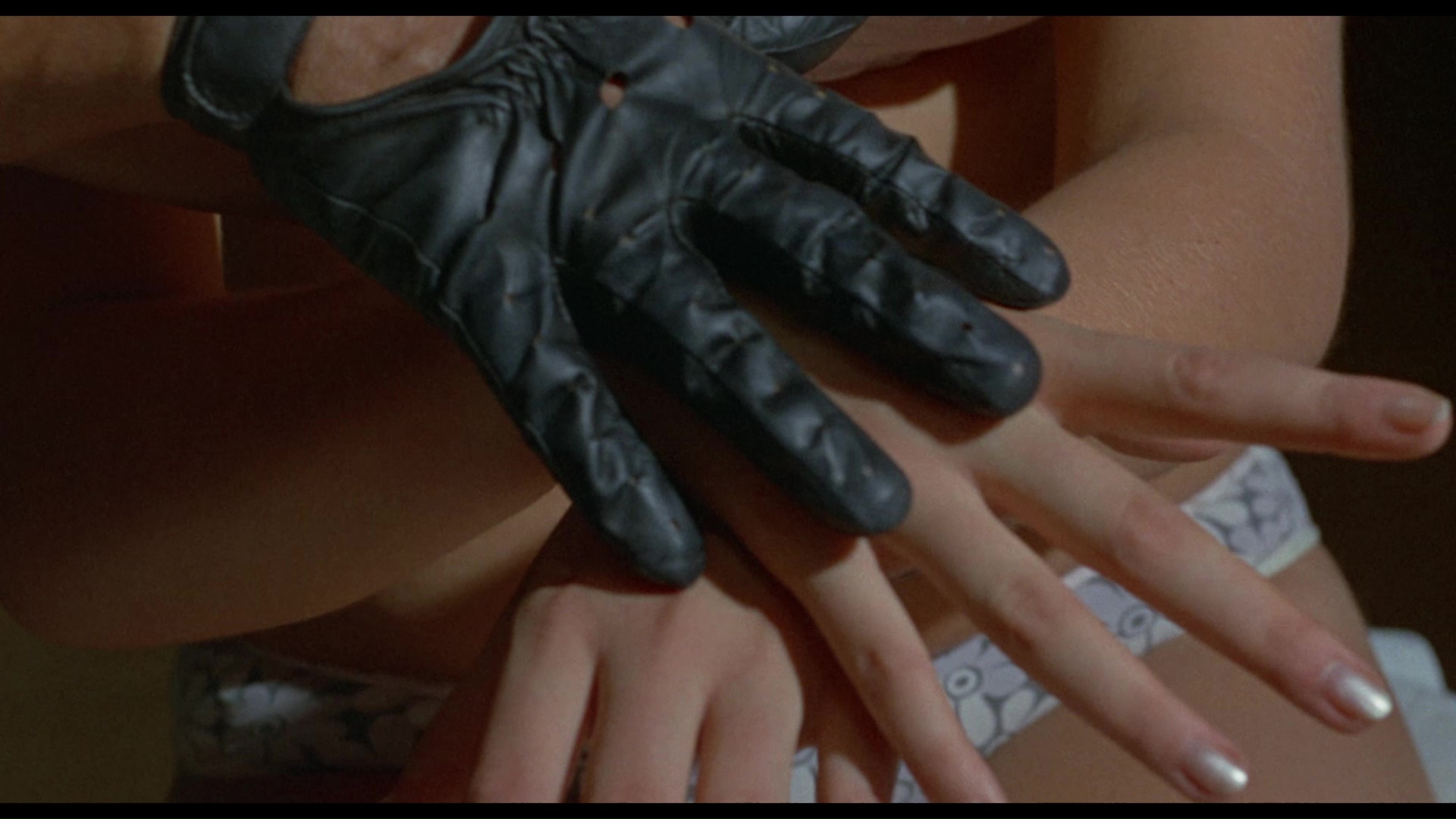 the strangest film they've ever tackled before launching into notes about the restored scenes, the director's leftist leanings (made explicit in the depiction of human workers reacting angrily to being replaced by cold machinery), the giallo conventions, and ties to everything from Doomwatch to The Knack (and How to Get It). The featurette "Discovering Questi" (19m47s) with the BFI's James Blackford sketches out some biographical details and explores his enthusiasm for that great trilogy of aforementioned films, with some interesting observations about Questi's place among Italy's Communist directors and the bourgeois digs he built into this film in particular. Then soundtrack collector (and DJ) Lovely Jon explores that wild Madera score in "Sonic Explorations" (23m51s) with a great deal of context about its approach including the reworking of a 1962 piece for the main titles and the iconoclastic refusal to go along with soundtrack trends of the time. "The Outsider" (12m40s) is a vintage Questi interview from 2010 (reportedly the last one of his life) bouncing around topics like creative freedom and the trimming of his films. "BBFC Film Cuts" (7m25s) offers a rundown of scenes demanded to be toned down before the U.K. release, with the prostitute scenes not surprisingly presenting the biggest challenges. An Antonio Bruschini film review (5m7s) is a very disorienting appraisal of the film shot in a jerky camera style, which seems appropriate, with much focus on the Renato Romano character restored in the full version. The English and German title sequences are also included along with gorgeous fresh HD scans of both the Italian and the very rare English trailers, the entire issue of European Trash Cinema about the film, and extremely extensive, separate galleries for the home video releases and
the strangest film they've ever tackled before launching into notes about the restored scenes, the director's leftist leanings (made explicit in the depiction of human workers reacting angrily to being replaced by cold machinery), the giallo conventions, and ties to everything from Doomwatch to The Knack (and How to Get It). The featurette "Discovering Questi" (19m47s) with the BFI's James Blackford sketches out some biographical details and explores his enthusiasm for that great trilogy of aforementioned films, with some interesting observations about Questi's place among Italy's Communist directors and the bourgeois digs he built into this film in particular. Then soundtrack collector (and DJ) Lovely Jon explores that wild Madera score in "Sonic Explorations" (23m51s) with a great deal of context about its approach including the reworking of a 1962 piece for the main titles and the iconoclastic refusal to go along with soundtrack trends of the time. "The Outsider" (12m40s) is a vintage Questi interview from 2010 (reportedly the last one of his life) bouncing around topics like creative freedom and the trimming of his films. "BBFC Film Cuts" (7m25s) offers a rundown of scenes demanded to be toned down before the U.K. release, with the prostitute scenes not surprisingly presenting the biggest challenges. An Antonio Bruschini film review (5m7s) is a very disorienting appraisal of the film shot in a jerky camera style, which seems appropriate, with much focus on the Renato Romano character restored in the full version. The English and German title sequences are also included along with gorgeous fresh HD scans of both the Italian and the very rare English trailers, the entire issue of European Trash Cinema about the film, and extremely extensive, separate galleries for the home video releases and 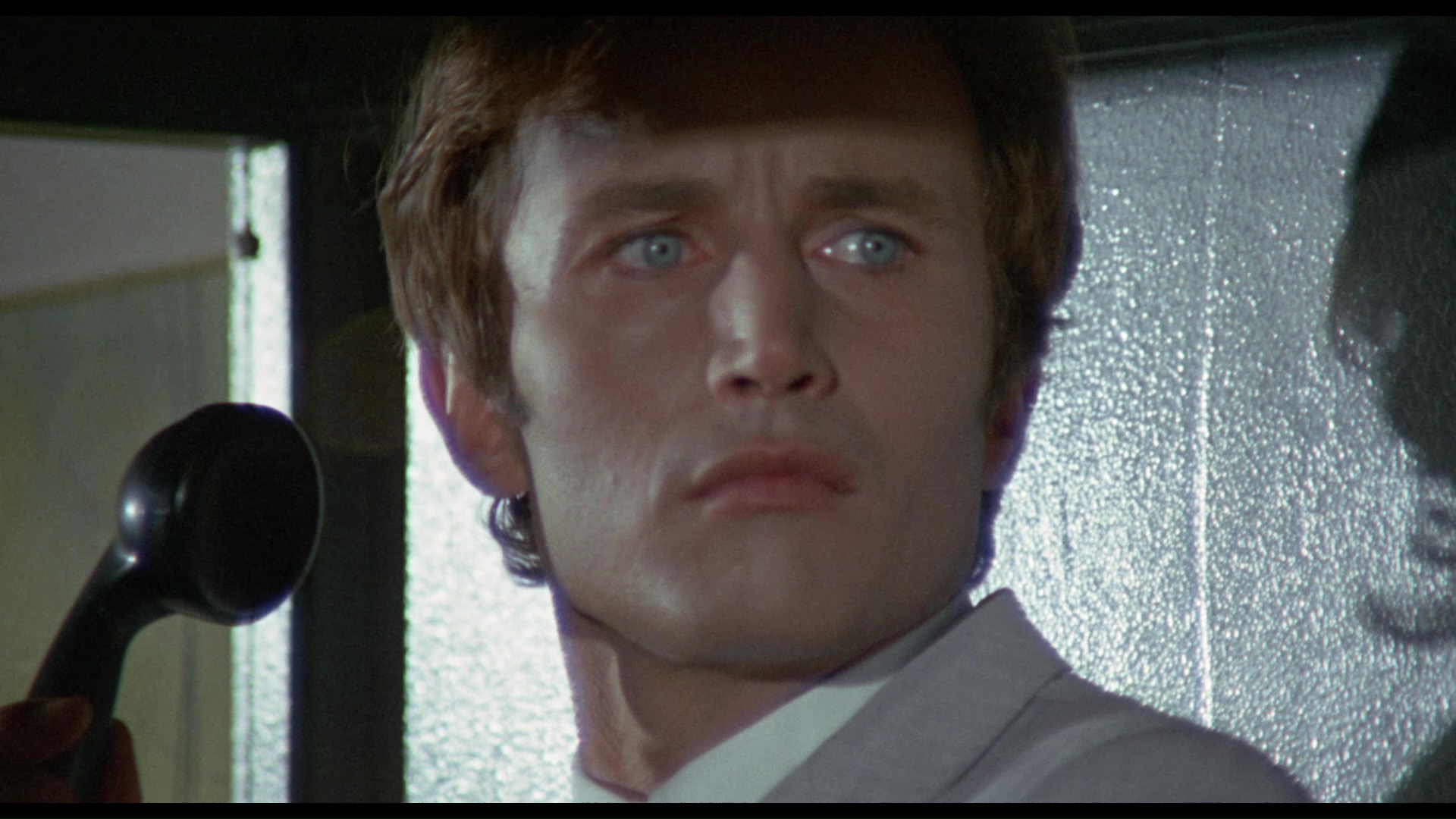 theatrical promotional material from
theatrical promotional material from 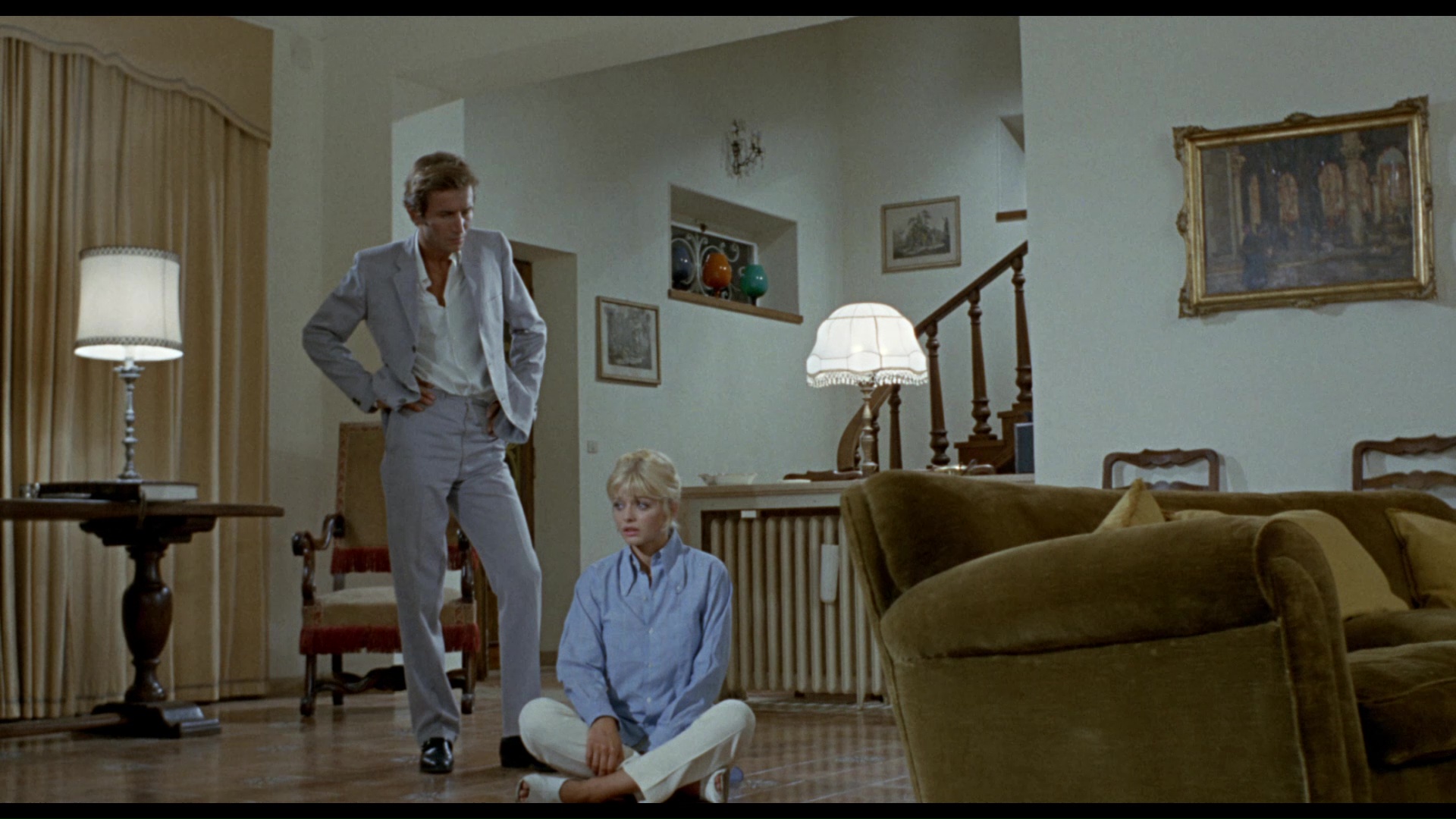 around the world. (It's really great to see so much material with that Plucked title on it.) This stunningly exhaustive release is available in a general release version or a limited slipcase edition with some beautiful lobby card reproductions enclosed inside.
around the world. (It's really great to see so much material with that Plucked title on it.) This stunningly exhaustive release is available in a general release version or a limited slipcase edition with some beautiful lobby card reproductions enclosed inside.
In 2020, Cult Epics revisited the film on Blu-ray for a special edition featuring the restored presentation seen on the Nucleus release for both the complete director's cut and the "giallo" cut. It looks just a slight hair brighter but not particularly different in any substantial way. Basically it's great to finally have this radically improved option available to North American fans. Audio options are Italian and English LPCM 2.0 mono with optional English subtitles for both cuts, while the director's cut also comes with a new audio commentary by Troy Howarth and this writer that obviously can't be assessed here. It does feature a lot of chatting about gialli, Questi, and egg puns though, so hopefully you'll enjoy it. The Bruschini review and "The Outsider" are ported over here along with the Italian and English trailers, while another new extra is the 2002 Questi short film, "Doctor Schizo and Mister Phrenic" (14m58s), which was previously seen only on the RHV By Giulio Questi DVD collection of short films and features Questi himself in a kind of literary rumination crossed with giallo elements and a repeated use of Carl Orff's "Carmina Burana." The package comes in a limited slipcase edition (2,000 units) featuring the Italian poster art.
Cult Epics (Blu-ray)
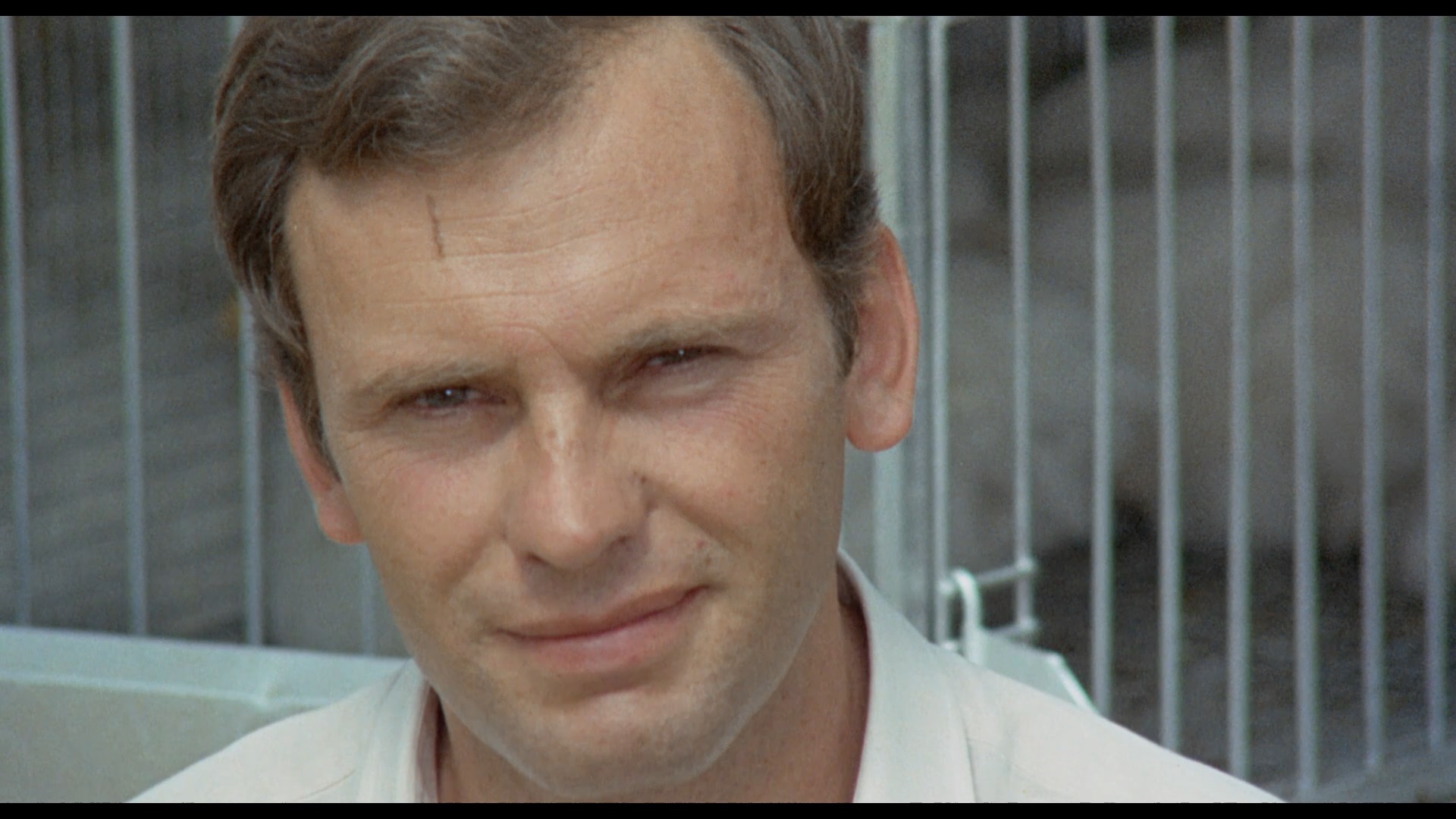
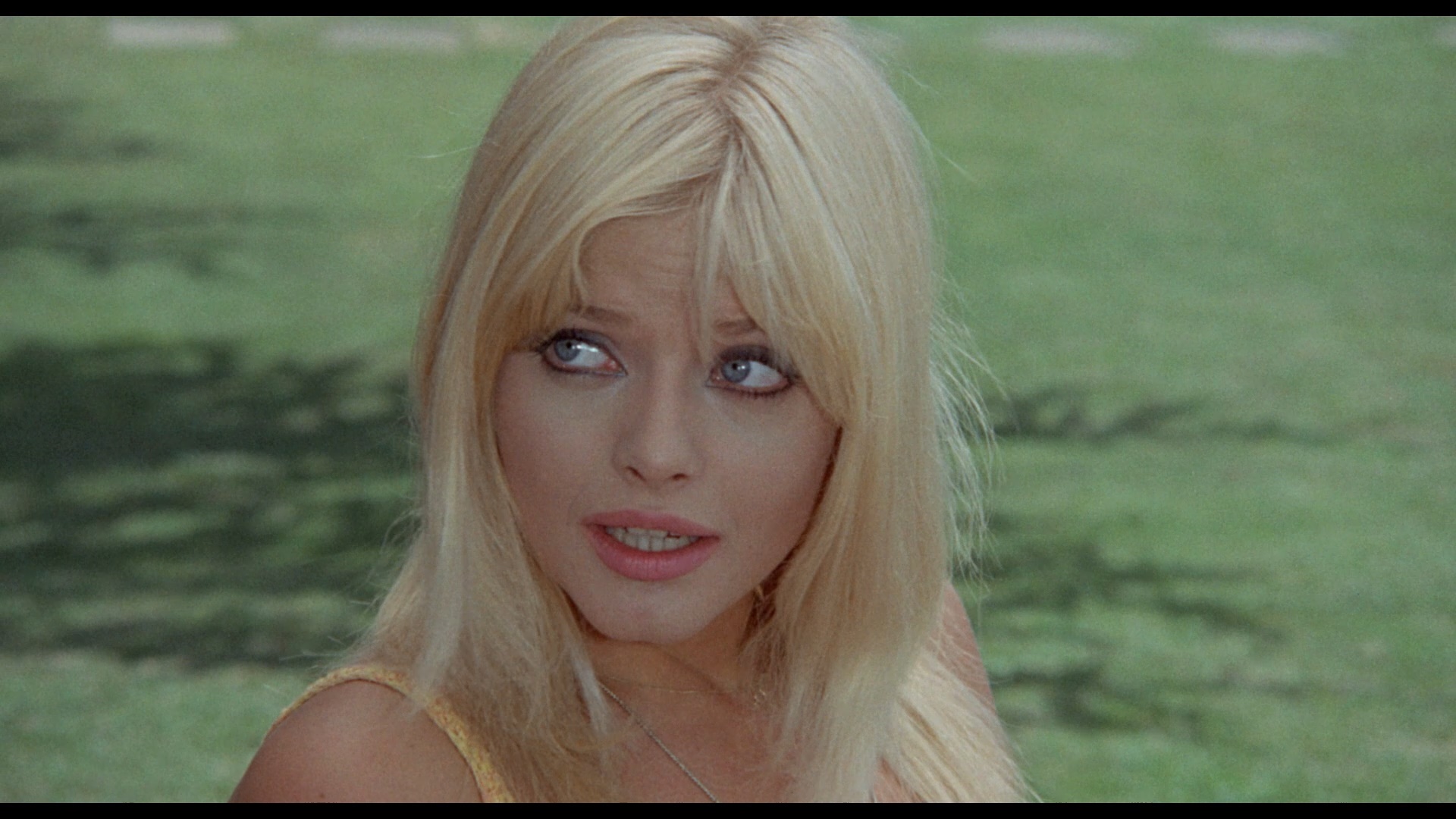
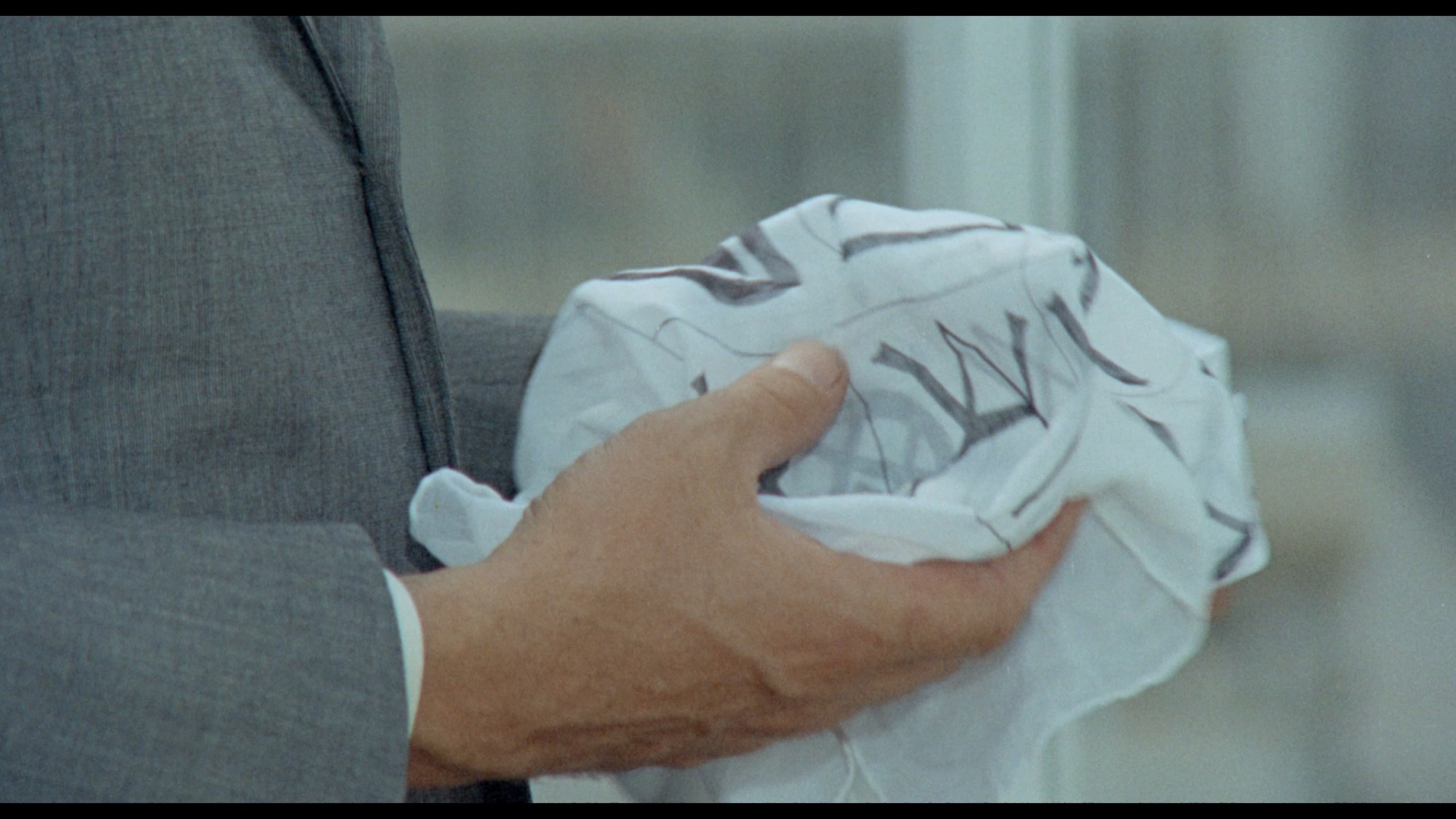
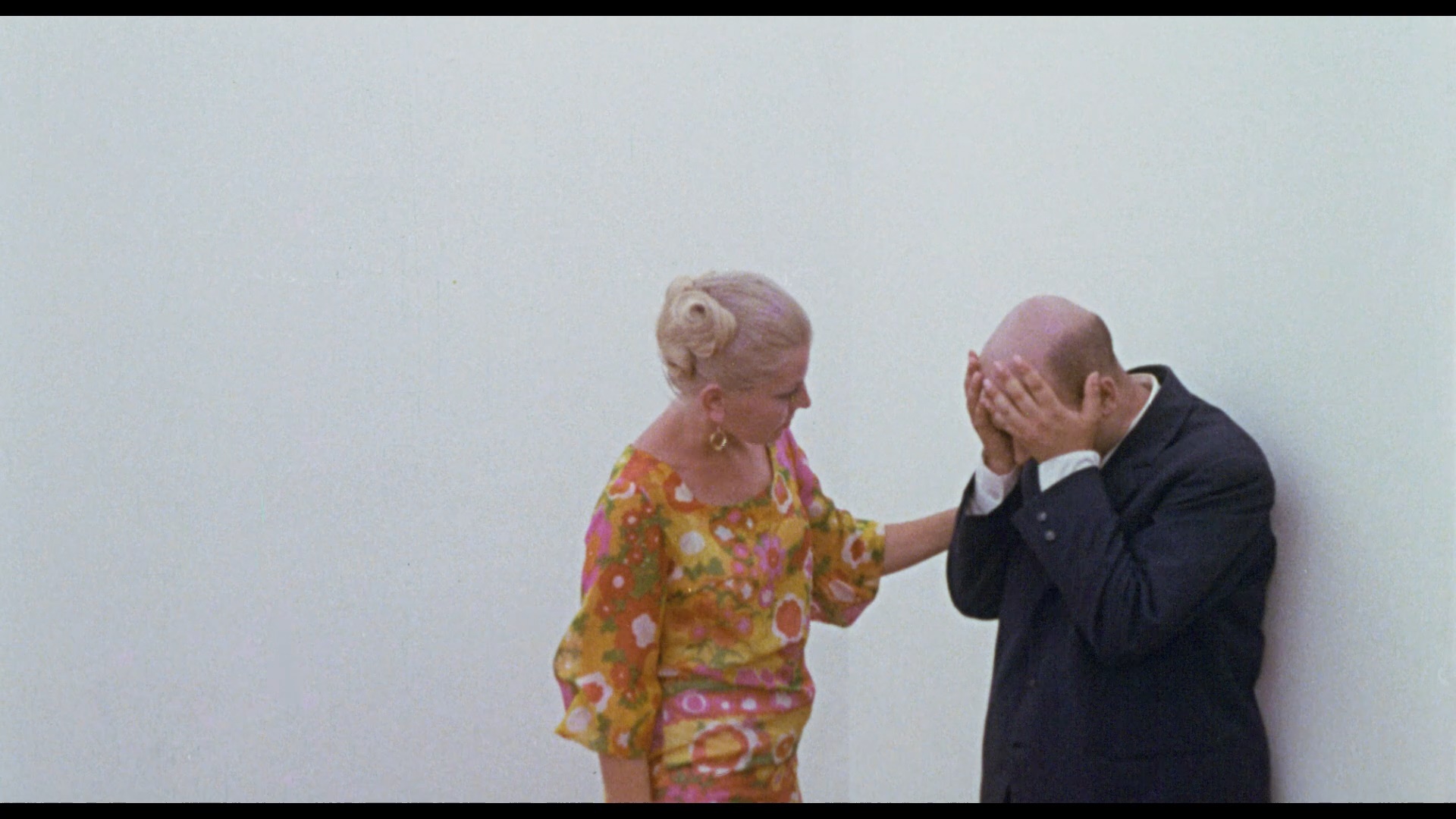
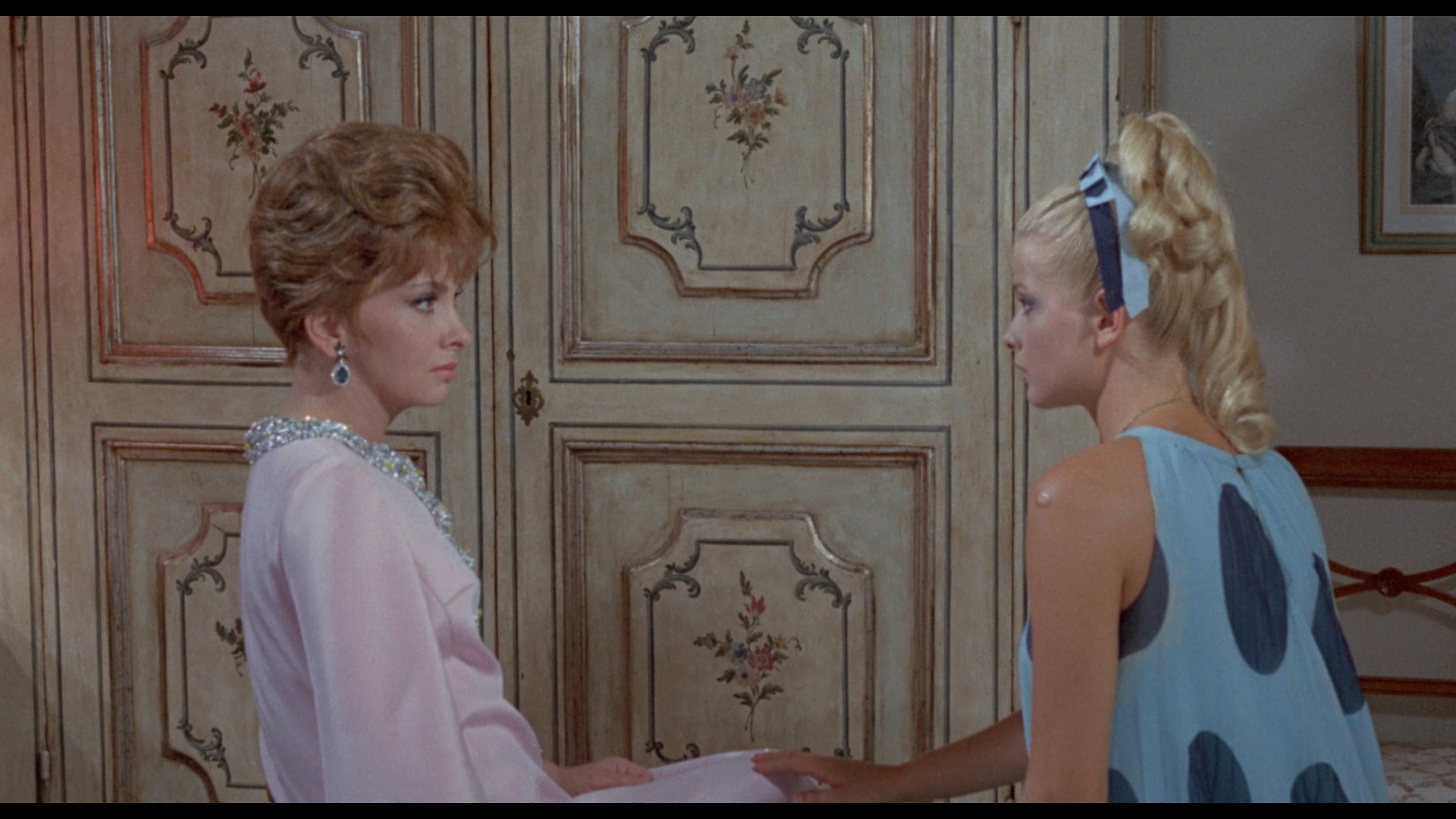
Nucleus (Blu-ray)
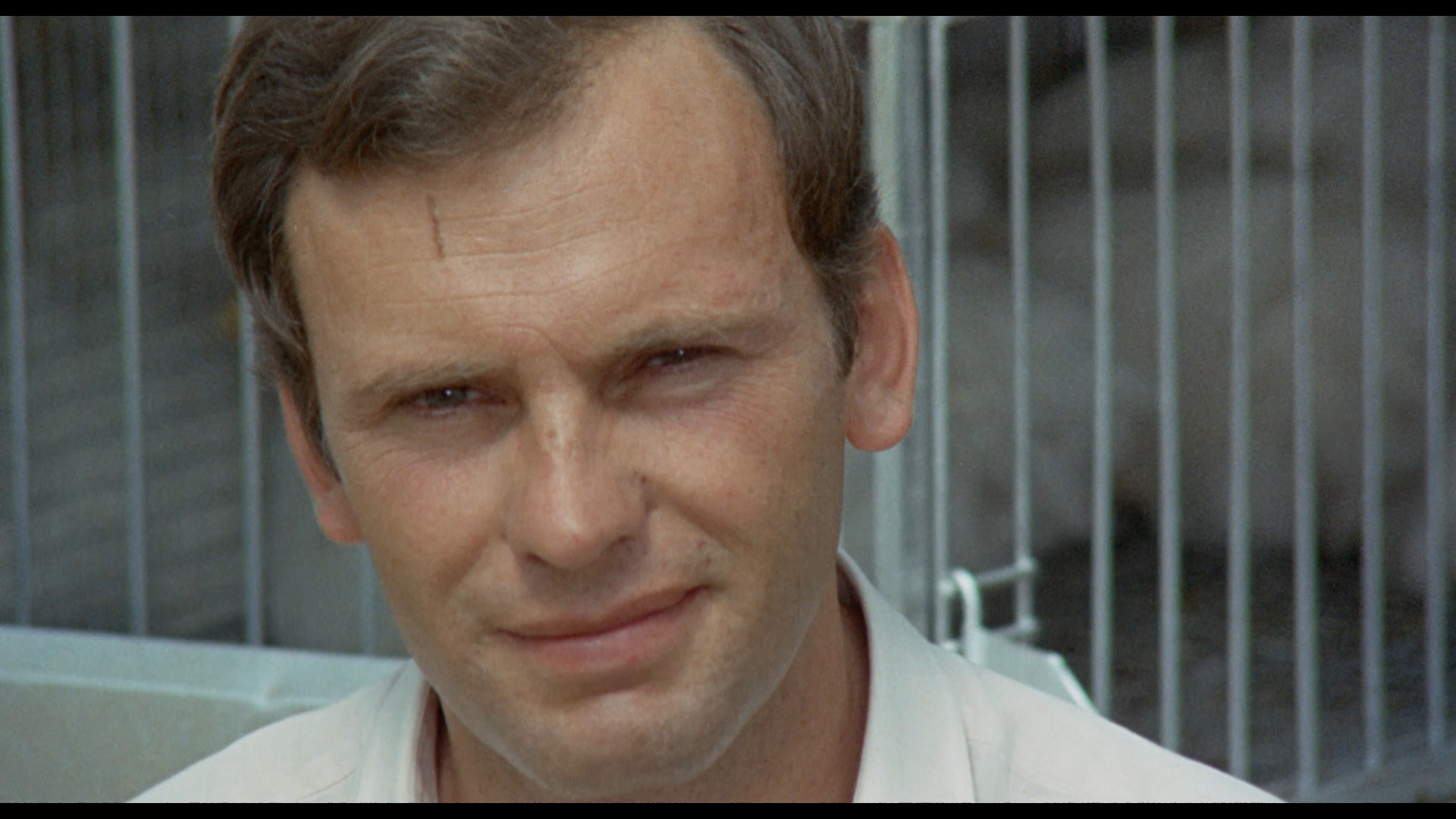
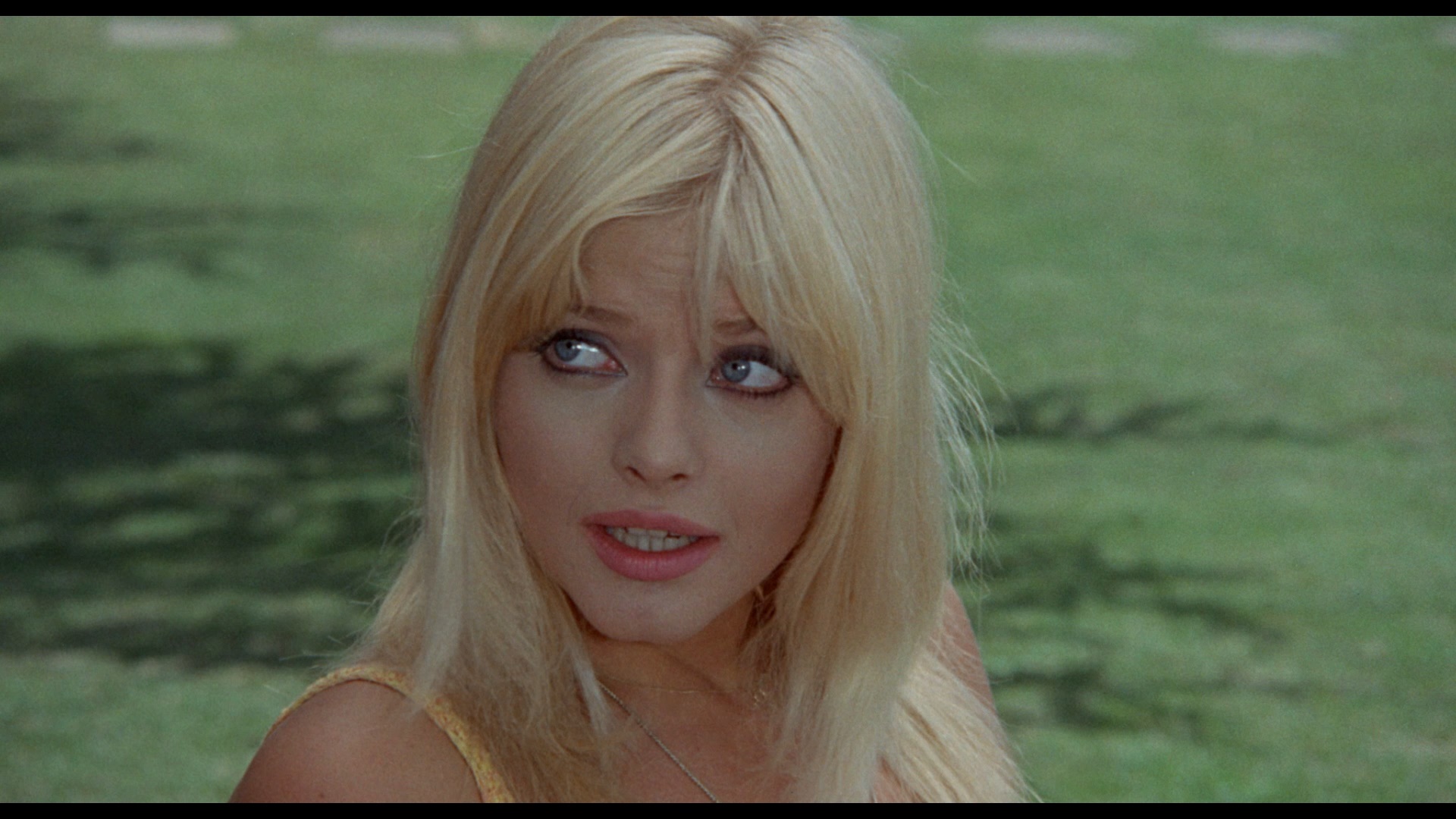
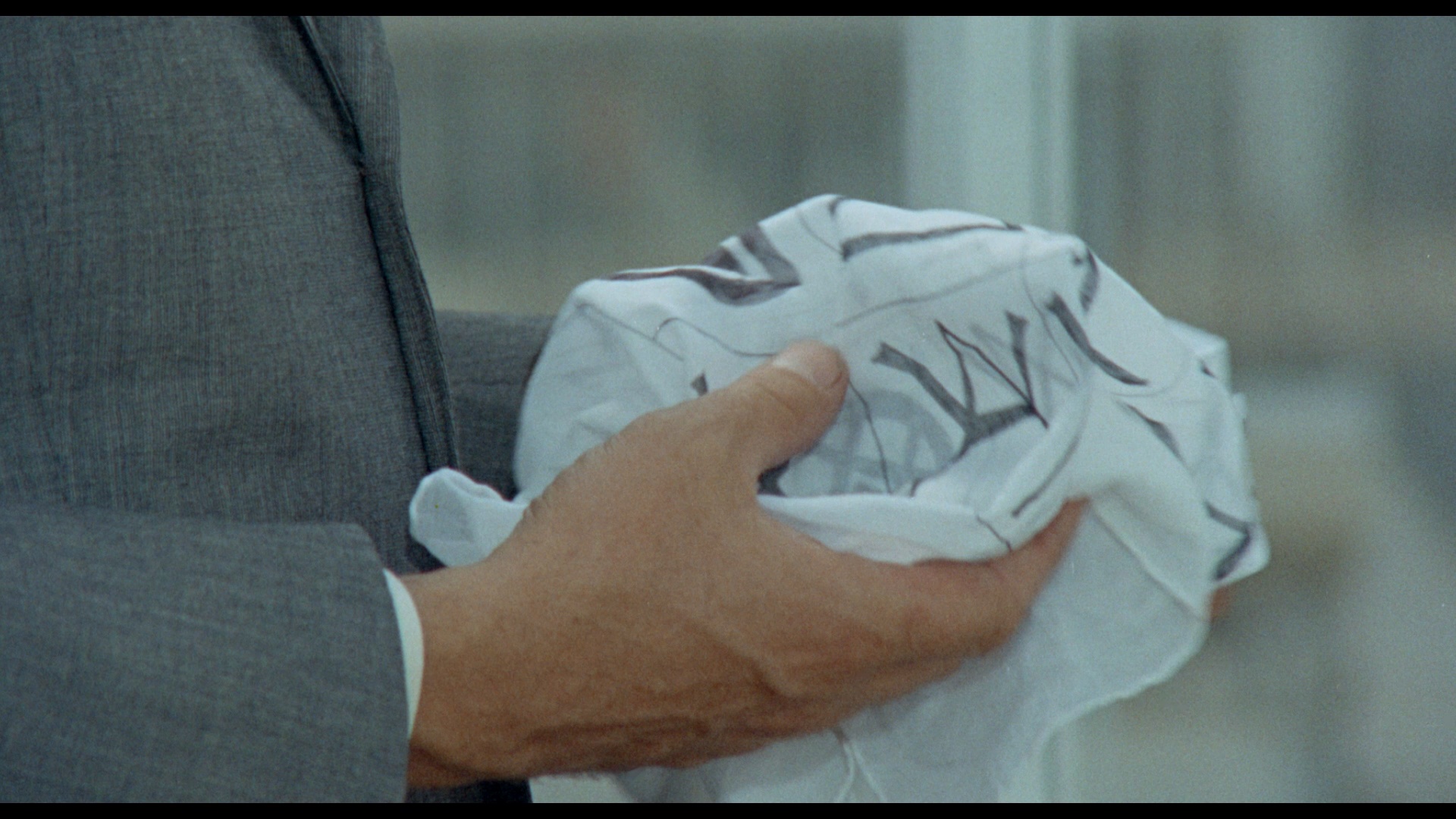
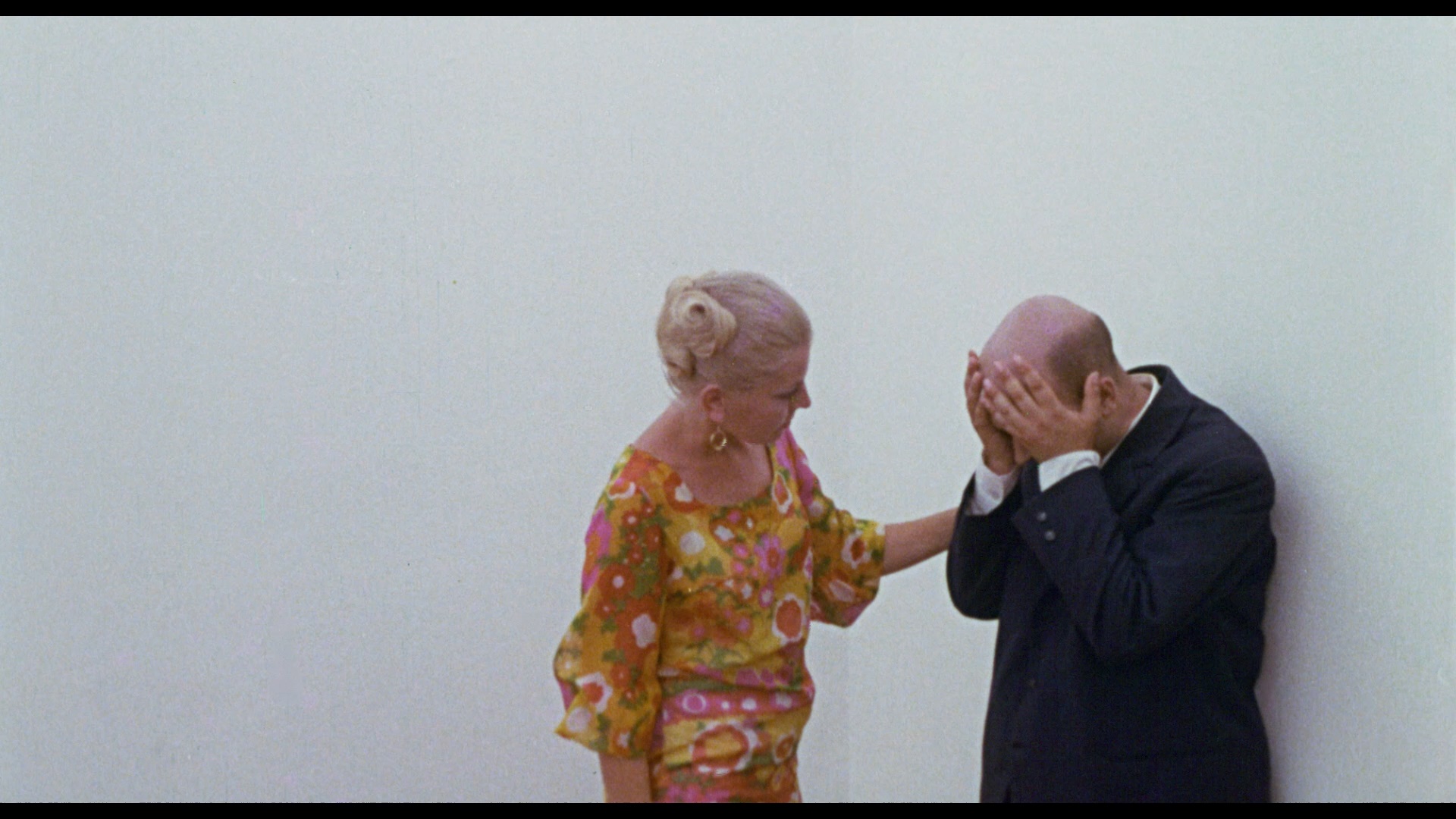
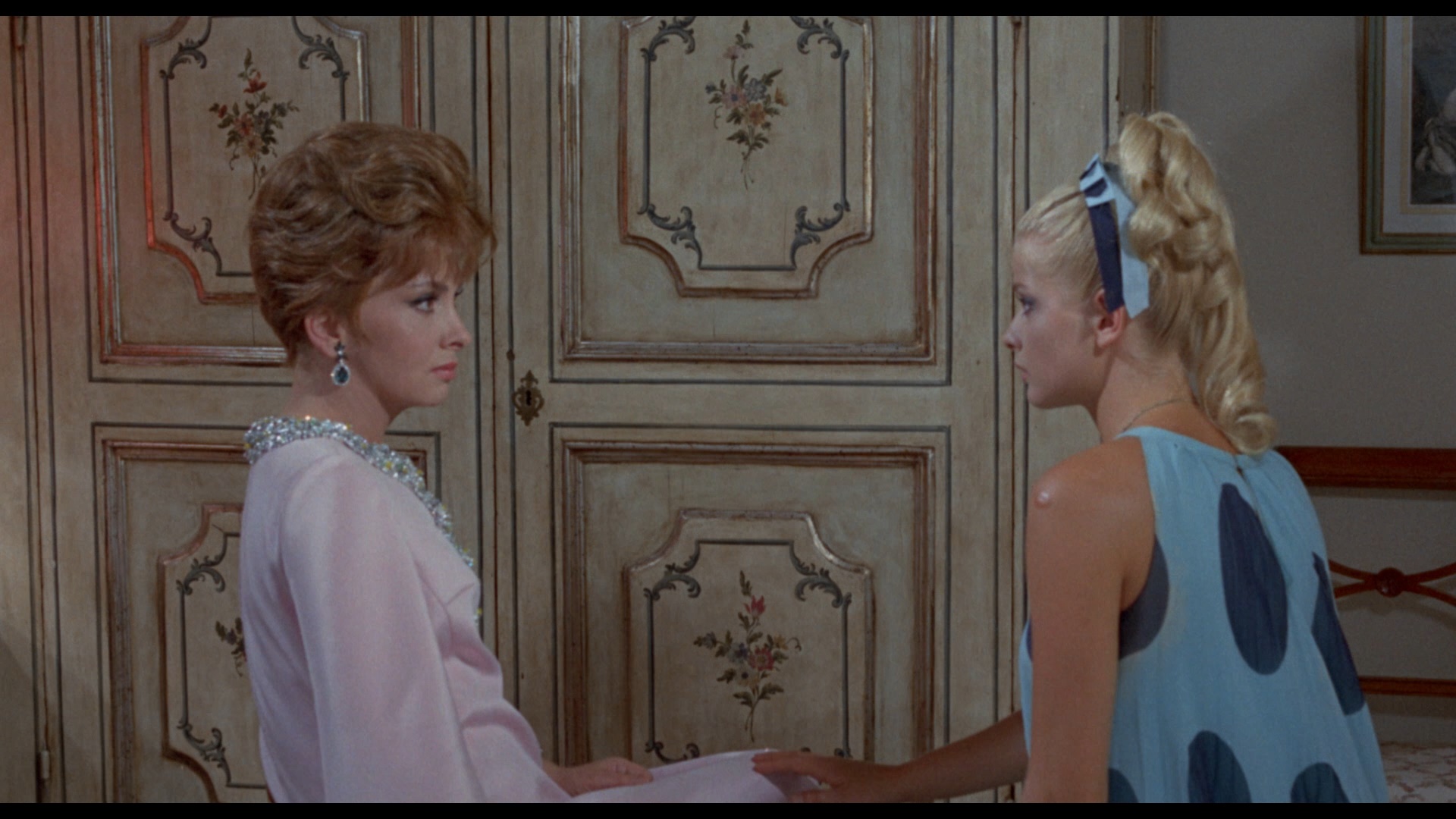
Reviewed on November 7, 2020



 strong contender for the weirdest
strong contender for the weirdest  giallo out there, Death Laid an Egg barely even qualifies as one at all for much of its running time. That’s not a bad thing at all as plenty of room is made for black comedy, implied fetishism, and outright grotesqueries to spring from the brain of avant-garde Italian filmmaker Giulio Questi, who directed this in between Django Kill… If You Live, Shoot! and Arcana with a script co-written by regular collaborator Franco Arcalli. Somehow, Questi also managed to lure in two unlikely, major stars for the project, Gina Lollobrigida and French New Wave star Jean-Louis Trintignant, as well as Swedish-born it girl at the time Ewa Aulin (Candy). Also boasting a truly out-there, unforgettable score by Bruno Madera, it's one of the most eccentric offerings from European cinema during the late '60s. And that's really saying something.
giallo out there, Death Laid an Egg barely even qualifies as one at all for much of its running time. That’s not a bad thing at all as plenty of room is made for black comedy, implied fetishism, and outright grotesqueries to spring from the brain of avant-garde Italian filmmaker Giulio Questi, who directed this in between Django Kill… If You Live, Shoot! and Arcana with a script co-written by regular collaborator Franco Arcalli. Somehow, Questi also managed to lure in two unlikely, major stars for the project, Gina Lollobrigida and French New Wave star Jean-Louis Trintignant, as well as Swedish-born it girl at the time Ewa Aulin (Candy). Also boasting a truly out-there, unforgettable score by Bruno Madera, it's one of the most eccentric offerings from European cinema during the late '60s. And that's really saying something. that results in pulsating, David Lynchian chickens without heads or wings. Soon all the deceptions and murderous plotting come to a head, though not quite in the way
that results in pulsating, David Lynchian chickens without heads or wings. Soon all the deceptions and murderous plotting come to a head, though not quite in the way  you'd expect.
you'd expect.  hot item on the fan-trading circuit before it finally hit DVD in 2003 in Japan. The non-anamorphic transfer (running 86m39s and looking like an uncorrected PAL-based transfer) was obviously better than the dupey VHS copies floating around and was in English with removable Japanese subtitles, even if the presentation itself wasn’t the hottest. Blue Underground planned to issue the title as part of its initial wave of giallo releases a couple of years later but the lack of suitable materials for a 16x9 transfer led to the project being scrapped. A new wrinkle in the film’s history appeared in 2015 when German label ELEA-Media released a “Giallo Double Feature” disc pairing the film up with the very rare Yellow: Le Cugine, both in German with optional English subtitles. Extras include trailers, galleries, and a liner notes booklet by Christian Kessler. What’s interesting is that the
hot item on the fan-trading circuit before it finally hit DVD in 2003 in Japan. The non-anamorphic transfer (running 86m39s and looking like an uncorrected PAL-based transfer) was obviously better than the dupey VHS copies floating around and was in English with removable Japanese subtitles, even if the presentation itself wasn’t the hottest. Blue Underground planned to issue the title as part of its initial wave of giallo releases a couple of years later but the lack of suitable materials for a 16x9 transfer led to the project being scrapped. A new wrinkle in the film’s history appeared in 2015 when German label ELEA-Media released a “Giallo Double Feature” disc pairing the film up with the very rare Yellow: Le Cugine, both in German with optional English subtitles. Extras include trailers, galleries, and a liner notes booklet by Christian Kessler. What’s interesting is that the  German version of Death Laid an Egg seen here is a very different edit of the film (88m38s), dropping a substantial amount of footage from the familiar Italian and English general release cuts while adding some startling footage unseen in other home video releases (most obviously some gruesome depictions of how chicken processing works, so eating while watching is not advised). The transfer itself is okay but again underwhelming, with a significant teal tint (the most obnoxious trend in recent transfers) that wipes out any pure whites in the film. In late 2017, Cult Epics brought the film to U.S. Blu-ray and DVD as a combo package initially promoted as part of its crowdfunding campaign revolving around the publication of a formidable coffee table book. That disc
German version of Death Laid an Egg seen here is a very different edit of the film (88m38s), dropping a substantial amount of footage from the familiar Italian and English general release cuts while adding some startling footage unseen in other home video releases (most obviously some gruesome depictions of how chicken processing works, so eating while watching is not advised). The transfer itself is okay but again underwhelming, with a significant teal tint (the most obnoxious trend in recent transfers) that wipes out any pure whites in the film. In late 2017, Cult Epics brought the film to U.S. Blu-ray and DVD as a combo package initially promoted as part of its crowdfunding campaign revolving around the publication of a formidable coffee table book. That disc  featured the standard English edition (known now as the “giallo version”) along with the trailer, a gallery of lobby cards, and an isolated score track to really confuse everyone within earshot. The transfer itself is reflective of the issues getting decent elements in the U.S., looking soft and wan throughout.
featured the standard English edition (known now as the “giallo version”) along with the trailer, a gallery of lobby cards, and an isolated score track to really confuse everyone within earshot. The transfer itself is reflective of the issues getting decent elements in the U.S., looking soft and wan throughout.  for the long version also has a few bits in Italian with subtitles, obviously, since there was never a full dub crafted for that one.
for the long version also has a few bits in Italian with subtitles, obviously, since there was never a full dub crafted for that one.  the strangest film they've ever tackled before launching into notes about the restored scenes, the director's leftist leanings (made explicit in the depiction of human workers reacting angrily to being replaced by cold machinery), the giallo conventions, and ties to everything from Doomwatch to The Knack (and How to Get It). The featurette "Discovering Questi" (19m47s) with the BFI's James Blackford sketches out some biographical details and explores his enthusiasm for that great trilogy of aforementioned films, with some interesting observations about Questi's place among Italy's Communist directors and the bourgeois digs he built into this film in particular. Then soundtrack collector (and DJ) Lovely Jon explores that wild Madera score in "Sonic Explorations" (23m51s) with a great deal of context about its approach including the reworking of a 1962 piece for the main titles and the iconoclastic refusal to go along with soundtrack trends of the time. "The Outsider" (12m40s) is a vintage Questi interview from 2010 (reportedly the last one of his life) bouncing around topics like creative freedom and the trimming of his films. "BBFC Film Cuts" (7m25s) offers a rundown of scenes demanded to be toned down before the U.K. release, with the prostitute scenes not surprisingly presenting the biggest challenges. An Antonio Bruschini film review (5m7s) is a very disorienting appraisal of the film shot in a jerky camera style, which seems appropriate, with much focus on the Renato Romano character restored in the full version. The English and German title sequences are also included along with gorgeous fresh HD scans of both the Italian and the very rare English trailers, the entire issue of European Trash Cinema about the film, and extremely extensive, separate galleries for the home video releases and
the strangest film they've ever tackled before launching into notes about the restored scenes, the director's leftist leanings (made explicit in the depiction of human workers reacting angrily to being replaced by cold machinery), the giallo conventions, and ties to everything from Doomwatch to The Knack (and How to Get It). The featurette "Discovering Questi" (19m47s) with the BFI's James Blackford sketches out some biographical details and explores his enthusiasm for that great trilogy of aforementioned films, with some interesting observations about Questi's place among Italy's Communist directors and the bourgeois digs he built into this film in particular. Then soundtrack collector (and DJ) Lovely Jon explores that wild Madera score in "Sonic Explorations" (23m51s) with a great deal of context about its approach including the reworking of a 1962 piece for the main titles and the iconoclastic refusal to go along with soundtrack trends of the time. "The Outsider" (12m40s) is a vintage Questi interview from 2010 (reportedly the last one of his life) bouncing around topics like creative freedom and the trimming of his films. "BBFC Film Cuts" (7m25s) offers a rundown of scenes demanded to be toned down before the U.K. release, with the prostitute scenes not surprisingly presenting the biggest challenges. An Antonio Bruschini film review (5m7s) is a very disorienting appraisal of the film shot in a jerky camera style, which seems appropriate, with much focus on the Renato Romano character restored in the full version. The English and German title sequences are also included along with gorgeous fresh HD scans of both the Italian and the very rare English trailers, the entire issue of European Trash Cinema about the film, and extremely extensive, separate galleries for the home video releases and  theatrical promotional material from
theatrical promotional material from  around the world. (It's really great to see so much material with that Plucked title on it.) This stunningly exhaustive release is available in a general release version or a limited slipcase edition with some beautiful lobby card reproductions enclosed inside.
around the world. (It's really great to see so much material with that Plucked title on it.) This stunningly exhaustive release is available in a general release version or a limited slipcase edition with some beautiful lobby card reproductions enclosed inside. 








